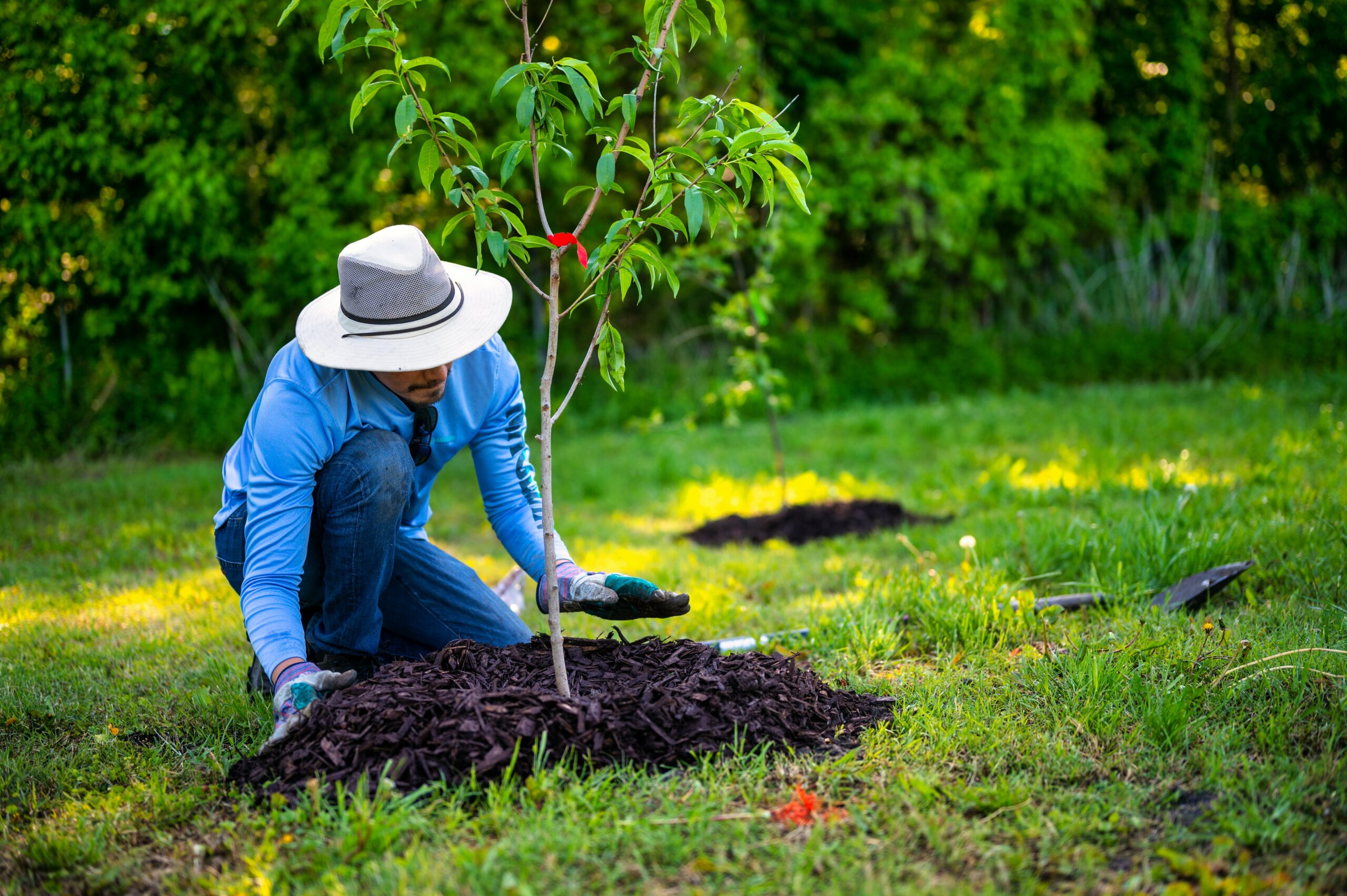One of the best parts of spring is getting back into our gardens! It’s a great time to add new plants, shrubs, and trees to our outdoor living spaces. Whether you’ve selected pines, maples, oaks, cypress, or bountiful fruit trees, there are a few considerations to make before you get them into the ground.
Giving Your Trees The Best Setup
To ensure your new trees can thrive, start with these six tree planting tips when planting this spring…
1. Optimize the Tree’s Soil
It can be very beneficial to improve your tree’s soil by adding an organic compost enriched with well-matured farm manure or a certified compost. You can make your own nutrient-rich tree soil by using an 80/20 soil compost mix.
Wait until your tree is better established and you have a strong root system before you begin any fertilizing routine.
2. Prepare the Tree’s Planting Hole
Planting new trees is a little different from planting bloomed flowers, flower bulbs, seeds, fruits, or vegetables. Trees require a larger planting hole and in general a larger planting space to grow to their full potential. Keep these things in mind when digging a hole for your new tree:
-
- Dig a Wide Enough Hole: Your new tree’s roots need enough space to expand in their new growing environment. Your tree planting hole should be wide enough to accommodate the root’s zone at full maturity (2 to 3 times wider than the current root mass). This will help ensure a stronger well established tree to enjoy for years to come.
-
- Plant Your Tree High: Your tree hole should be set in a way that allows your tree to be planted slightly higher than ground level. Trees that are planted too low can be affected more by disease and rot.
-
- Tree Location: Make sure you are giving your tree plenty of space to grow and thrive. Every tree will have its own unique specifications and guidelines to follow. In general, plant new trees several feet away from other trees and large shrubs that may compete for resources as well as fences and other hardscape items in your yard.
3. Check the Tree’s Roots
Often when we buy any new plant from the nursery, they are root bound. These trees and plants have been growing in the same containers for some time without having enough space for their roots to branch out. A root-bound tree that has compacted roots growing into a circle pattern will not grow as successfully as a tree with roots that have been broken up and allowed to grow outward. If your new tree has constricted roots, break them up! This will allow the roots to spread and absorb more nutrients needed for their survival.
4. Avoid Air Pockets in the Soil
You will want to ensure good contact between the soil and the roots. To do this, lightly tamp or hand-pack the soil around the tree to force out any air holes. You can also add water halfway through the backfilling process to help force out air pockets. Doing this also helps provide more moisture for your newly planted tree.
5. Mulch Around the Tree
Mulch plays a vital role in the overall health of your tree. However, if not spread correctly, mulch can actually cause harm to your new and existing trees.
Benefits of Proper Mulching
- Retains soil moisture by slowing evaporation and increasing water infiltration
- Helps to prevent the growth of weeds that compete with tree roots for water and nutrients
- Improves soil structure, fertility, and aeration as it decomposes
- Protects roots from extreme winter and summer temperatures
- Reduces potential tree damage from mowers and trimmers
Tree Issues from Over Mulching
- Tree Root Oxygen Starvation
- Inner Bark Death
- Tree Fungus
- Excessive Heat To Trunk
Learn more about the right way to mulch around your tree.
6. Keep Your Tree Watered
You will need to provide supplemental watering for your newly planted tree. Young trees need lots of water to grow big and strong. For the first several weeks, months, and sometimes a full year, you will want to keep a close eye on your newly planted tree. Since it is not possible to determine how deep the wet soil around your tree runs, you will have to watch how the tree responds to being watered.
If your new tree appears to respond negatively or poorly when you are watering consistently, it’s likely that you are over-watering. If the tree’s leaves are turning brown, drying up, or falling off, and the soil appears dry, you need to water more.
Count on Blackhawk for All Your Tree Care Needs
For existing trees and new trees, BlackHawk has you covered. Find out how to properly care for, or remove, the trees around your home by calling Blackhawk Tree Services at (919)-469-1340. We are proud to be one of North Carolina’s most reliable tree service experts, specializing in everything from pruning to removal and beyond. We provide tree service in Raleigh, Fuquay-Varina, Morrisville, Cary, Holly Springs, and Apex areas.

